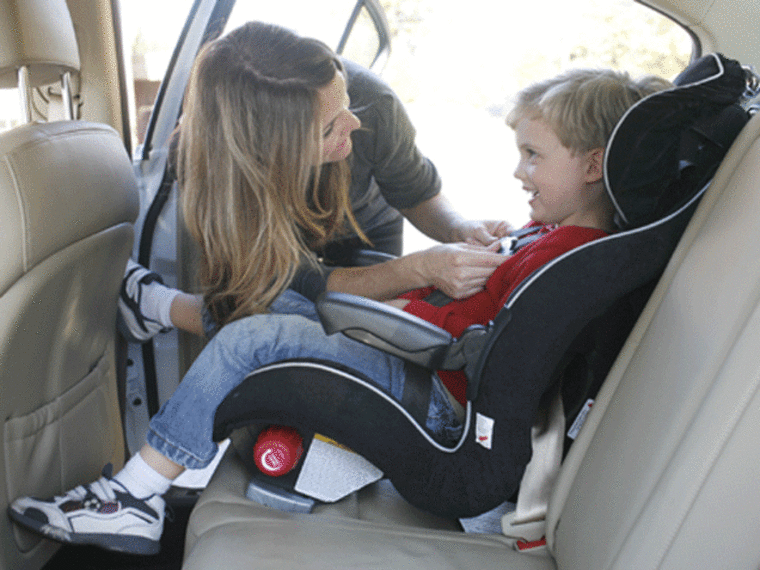Sometimes it seems as if just as you're finally getting the hang of your car seat installation, the guidelines change again. Here's the newest recommendation: A proposed new rule says that the safest bet for older and heavier kids is to stop using lower LATCH (Lower Anchors and Tethers for Children) anchors with your car seat.
Here's why: When the LATCH system was introduced in vehicles in the early 2000s, car seats did not weigh as much as they do now, and children did not sit in harnessed seats until the older ages and higher weights that are now recommended. Now there's concern that the lower LATCH anchors may be overly stressed by the heavier weight. The proposed regulations hope to fix this problem: If they go through, they'll require the lower anchor limit to be 65 pounds (many auto makers have already adopted this weight limit). If your child together with the car seat weigh more than that, the new rule, which is expected to go into effect in February 2014, says that you should stop using the lower LATCH anchors for your car seat, and secure it with a seat belt (and top tether for all forward-facing seats) instead. As part of this new rule, car seats will be labeled with the max weight for your child, taking into account the weight of the seat, so parents can skip the math and make the switch at the right time.
"LATCH was conceived with the goal of reducing the misuse rate for car seats. Unfortunately, the misuse rate stubbornly remains at 90 percent," says Alisa Baer, MD, a pediatrician in New York City known as The Car Seat Lady. Although safety advocates haven't yet seen the lower anchors fail in a crash, they fear it's a potential risk as more parents get the message to keep their kids in car seats as long as height and weight limits allow, Baer says.
Seat belts have always been a safe way to secure your child’s car seat. Like with LATCH, it all comes down to whether you know what you're doing, says Baer. Now that the lower LATCH anchors are being advised against for kids who exceed the combined weight limit, it’s important to brush up on how to do a seat belt installation:
1. Read the car seat AND vehicle owner's manuals—especially the parts on installing a car seat with the seat belt.
2. Make sure the seat belt is locked and tight during normal driving. This is very different from the way a seat belt is around an adult, or even a child sitting on a booster; seat belts for us are loose during driving and only lock during a crash. Some child car seats have a built-in locking device to keep the seat belt tight (these tend to take the guesswork out of seat belt installations). All seat belts in cars since 1996 here in the US feature a locking mechanism specifically designed to hold a child’s car seat tight; about 95 percent of cars feature the locking mechanism shown in this video:
3. Apply pressure to the car seat (most seats like downwards pressure plus being wiggled side to side, which helps sink them into the cushion) while at the same time pulling the belt tight.
4. Check that the car seat is tight. You should not be able to move the seat more than an inch in any direction.
5. Don't forget the tether! It is the most important part of every forward-facing car seat as it decreases how far the child's head moves forward in a crash by 6 to 8 inches, which is crucial in minimizing the risk of brain and spinal cord injury. Sadly, only 30 percent of parents tether their children's forward-facing car seats, says Baer.
6. Get the installation checked by someone trained! The average seat has three errors, Baer says. Most errors are not obvious to parents, which is why the misuse rate stays at 90 percent. This video from the National Highway Traffic Safety Administration shows a step-by-step installation to help parents get it right:
Mom of two Sasha Emmons is a writer and editor. Follow her on Twitter and Google+.
A version of this story originally appeared on iVillage.
